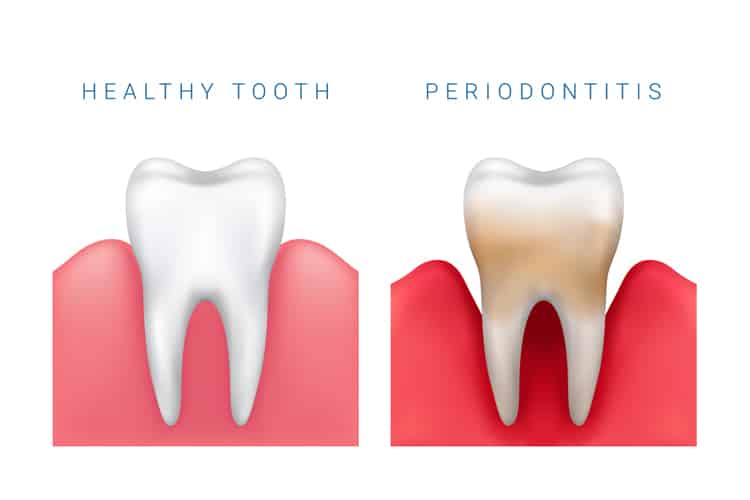Periodontal Risk Assessment
Risk factors are described as any attribute, characteristic, or exposures that affect the onset and progression of disease; therefore, risk factors may significantly alter treatment results.

Risk factors are described as any attribute, characteristic, or exposures that affect the onset and progression of disease; therefore, risk factors may significantly alter treatment results. More specifically, periodontal risk factors are environmental, behavioral, or biological factors that raise the probability of treatment failures. Over the past 10 years, the American Academy of Periodontology (AAP) has offered guidelines that incorporate risk assessment in patient management, noting that without risk assessment, comprehensive dental and periodontal evaluations are incomplete. In June 2018, the AAP released the new periodontal classification scheme, which includes grading levels relating to the risk of periodontitis progression and general health status. This grading system further signifies the evidence-based relationship of risk assessment and periodontitis treatment recommendations.
Photo Credit: Katerina Sisperova / iStock / Getty Images Plus

Tools for Risk Assessment
Risk assessment can be time-consuming, but tools are available to increase efficiency. Easy-to-use risk assessment forms or more advanced scientific methods that use mathematic algorithms—also known as risk calculators—can predict risk. Software products, online programs, and application programs may aid in predication of prognosis and facilitate proper treatment planning. Several electronic risk calculation programs are available. Some are inexpensive or free and can be found easily online, while others are more expensive and require software updates and user training. It remains unclear whether these options offer better accuracy over proper clinical judgment.
Photo Credit: 4zevar / iStock / Getty Images Plus

Categorizing the Data
Once the patient assessment data have been gathered, clinicians must categorize the identified risk factors into two categories: modifiable risk factors and nonmodifiable risks factors. Modifiable risk factors are improvable or changeable factors, while nonmodifiable factors cannot be changed or modified. The purpose of categorizing risk factors is to determine which factors should be targeted by the clinician in the treatment plan. Nonmodifiable risk factors are also called risk determinants. Neither the clinician nor the patient has control over these risk factors; however, the patient must be informed that they may affect treatment outcomes and disease progression.
Photo Credit: mediaphotos / iStock / Getty Images Plus

Most Significant Risk Indicators
Smoking alone can inhibit a patient’s immune response to harmful pathogens found subgingivally in biofilm. Evidence shows that smoking is a catalyst in the extent and severity of periodontal diseases. Diabetes and periodontal disease have been linked as a proportional relationship; periodontal inflammation has a negative effect on glycemic control and diabetes increases the risk of periodontitis. A systematic review of the literature found that the prevalence and severity of periodontal disease escalates with age. Older adults are vulnerable to diseases, may struggle to complete adequate self-care, and experience diminished access to care. Genetics and familial patterns, including a history of chronic and aggressive periodontitis, may predispose a patient to periodontitis.
Photo Credit: Doucefleur / iStock / Getty Images Plus

Treatment Planning
Interventions to consider for an individualized-aggressive treatment plan for high-risk periodontitis patients are:
- Nonsurgical periodontal therapy as soon as possible
- Immediate smoking cessation and adjunctive support
- Physician consult(s) or referral to appropriate health care professionals
- Rigorous self-care
- Education on oral-systemic health connections
- Education on susceptibility
- Use of antimicrobial mouthrinse, oral irrigation, systemic antibiotics, local chemotherapeutic agents, and/or extended low dose doxycycline to control collagenase activity
- Elimination or reduction of modifiable risk factors
- Supportive periodontal maintenance every 2 months to 3 months, based on patient response to care
- Referral to periodontist for surgery

